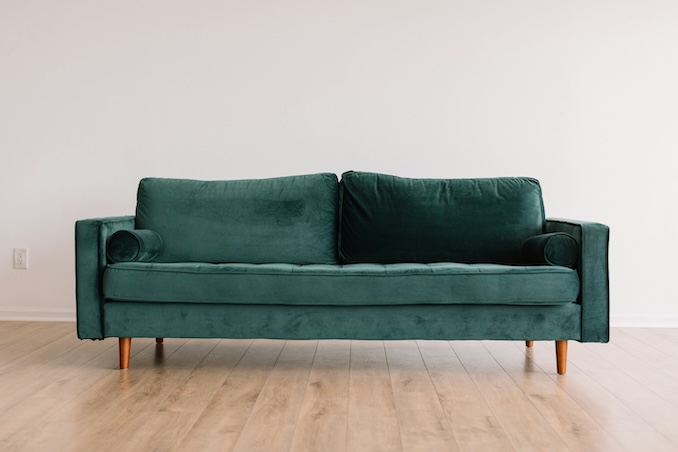It is not always easy to find what to do with old furniture, especially in relocation situations. Knowing how to trash unwanted furniture properly and responsibly is important when moving into a new house or office. Therefore, in this article, we will share with you some effective methods and eco-friendly alternatives for disposing of your furniture in Canada so that you may get into your new space with no headache.

Effective Ways to Remove Old Furniture
There are a number of options to dispose of furniture, but the best method for you may be dependent on your location, needs, and the environmental implications. Here are effective ways to remove old furniture:
- Hire a professional service: Companies like Real Estate Movers offer a full moving service in Canada, including furniture removal. This is an easy way to ensure that your furniture is disposed of appropriately. Professional movers often have the tools necessary to transport big, heavy objects, which lowers the possibility of accidents or property damage.
- Municipal collection services: Many cities in Canada offer bulk waste collection services. Check your local municipality for days of pick-up and guidelines. Most often, this service is free or at a small fee, thus fairly cost-effective for taking away unwanted furniture.
- Rent a dumpster: These can be handy for large-scale disposals. You can put as much furniture as you need to in a dumpster and clear it all at once. It is particularly useful when you plan your move across Canada as it ensures a full, one-time cleanout. However, you may want to inquire about restrictions on what you’re allowed to put in the dumpster.
Items Suitable for Recycling
To dispose off furniture, another environmentally-friendly way is recycling. Many types of materials used in making furniture can be recycled; hence, it reduces waste and conserves resources. Items suitable for recycling in furniture include:
- Metal frames: These can be taken to scrap metal facilities. One method of preserving natural resources and lowering part of the energy needed to produce new metal goods is metal recycling.
- Wood: If wood isn’t chemically treated, it can be recycled or used again. Recycled wood can be used for everything from mulch to new furniture pieces.
- Glass: Glass from tables or cabinets may also be taken to the local recycling facilities. Glass recycling reduces the need for raw materials, among other means that ensure reduction in energy use.
Items Requiring Trash Collection
Not all pieces of furniture can be recycled. Some may have to be taken out with the trash. These include:
- Upholstered furniture: These are hardly recycled because they are manufactured from a combination of several inseparable materials. Most upholstered furniture would typically include foam, cloth, and wood and cannot be easily separated out for recycling.
- Broken or damaged items: If these cannot be repaired, they should be taken out with the regular trash. Be sure to pack sharp or hazardous components properly to avoid injury during collection.

Guidelines for Special Disposal Cases
Some items require special attention that ensures proper disposal in line with guidelines. Understanding these guidelines can help you manage your furniture disposal more effectively.
Items Needing Special Recycling Requests
Some parts of furniture may have special requests for recycling, like certain plastics or treated wood. For these, it is best to contact your local recycling center for guidance on how to handle such materials. They may provide specific instructions or refer you to specialized facilities.
Proper Disposal of Electronics
Electronic components integrated into furniture should be disposed off responsibly. Many cities have e-waste recycling programs. Ensure you pull out electronic components and pack them separately, as this prevents the release of toxins present in them into the environment.
Mattress Recycling and Disposal Guidelines
Mattresses are bulky items that can be difficult to get rid of. However, most regions across Canada offer mattress recycling services. Contact your waste management service provider about your options. Recycling a mattress saves steel springs, wood frames, foam, and batting, thereby lessening waste output going into landfills.
Handling Furniture with Bed Bugs
Heavily bed bug-infested furniture should be carefully handled. Wrap the item in plastic and label it as infested to be thrown out or incinerated. Some municipalities also have special pick-ups for these items. This will help prevent re-infestation in your new location.
Sustainable Alternatives to Furniture Disposal in Canada: Donation, Selling, and Upcycling
Instead of disposing of furniture, consider sustainable alternatives like making donations, as it benefits both the environment and the community.
How to Donate Furniture Responsibly
Another great way to give back to the community is to donate furniture; many non-profits and charities alike are always willing to take it off your hands. Just make sure everything is in good condition. Then, call them up to help you arrange where to pick up or drop off. Some may even give you a receipt for tax purposes.
Tips for Selling Unwanted Furniture
Some office or house moving tips for selling furniture include posting them on online platforms, such as Kijiji or Facebook Marketplace. Attach clear photos and descriptions to attract interest and showcase any unique feature or history of the piece that may appeal to potential buyers.
Creative Ideas for Repurposing and Upcycling Furniture
Upcycling is the creative process of breathing life into old furniture. Consider these:
- Upcycle dresser into TV stand: Just freshen up a dresser with paint and make a little modification, and it can become a cool TV stand. This can be achieved using basic work tools and materials.
- Turn a table into a desk: Take an old dining table and make it useful for your home office. You can also attach some shelves or drawers for added storage and functionality.
Conclusion
Furniture disposal can be a difficult experience, especially if you have many to get rid of, but the various approaches and eco-friendly alternatives provided here can help deal with it effectively without affecting the environment. Be it recycling, donating, or upcycling, every responsible action counts toward ensuring your disposal is done correctly.
Share your thoughts and experiences with furniture disposal in the comments below, and let’s continue the conversation on sustainable moving tips!
